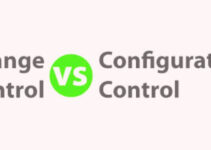Organizational change risk assessment is the process of analyzing and monitoring the risk factors relevant to the change management project. It helps the organizations from the negative impacts and the changes that would disrupt employees from performing their jobs. However, risk assessment plays a key role in recognizing the risks, and implementing better strategies for dealing with issues to amplify the success rate. Today, we’ll discuss organizational change risk assessment; key benefits, risks, tips, and steps involved in the process of conducting change management risk assessment.
Benefits of Change Management Risk Assessment
- Decreasing the unexpected issues, errors, and outcomes
- Amplifying the efficiency and effectiveness
- Improving the flexibility of organizational processes
- Avoiding project delays, expensive repair work, and budget overruns
- Carefully diagnosing the risks and developing customized strategies relevant to the company
Process of Organizations Change Risk Assessment
Some of the main steps involved in the process of conducting organizational change risk assessment; they’re as follows;
Outline Risk Analysis Framework
It is significant to have a full comprehension of the change project and what it plans to achieve; it outlines the risk assessment processes. The company should develop the change management risk analysis framework while doing so. It sets the grounds for recognizing potential risk factors and comprehending their impact on the organization.
The risk analysis framework should be relevant to the particular change project and keep in mind the current company’s change processes. It makes sure that all the stakeholders are familiar with the company’s goals and objectives; change management risk factors, and take necessary steps to deal with it.
Data Processing
Secondly, you should gather data and information from various sources like; reports, documents, and interviews of stakeholders. It is significant to recognize the key potential change management elements and analyze their impact on the company. However, the data processing offers you a key insight into the change risks and their impact on the company’s operations. It also helps you in the following ways;
- Recognizing change management risks
- Knowing underlying causes
- Analyzing the available solutions
- Making informed decisions while dealing with change project
Recognizing & Evaluating Risks
The 3rd stage comprises comprehending the root causes and analyzing their potential impact on the company. It is significant to recognize all the considerations, dependencies, and interdependencies that would impact the change risk analysis. Companies should make sure whether their current processes are sufficient to deal with the change risks. It comprises of following;
- Knowing the impact of the change project on the system, process, and structure
- Comprehending the available resources to manage the change risks
Crafting Response Plan
The final stage is to develop strategies and processes to decrease the change risk; and develop a contingency plan if the change plan doesn’t work. Companies should recognize the necessary resources (technology and expertise) for the success of the change program. Prioritization of the potential change risk factors helps the company to determine what critical risk factor to manage first.
Risks of Organizational Change Risk Assessment
Some of the main risks relevant to the organizational change risk assessment are as follows;
Goals & Changes Misaligned
The main change management risks are when the company’s goals and objectives and the change program aren’t streamlined. When they don’t align with each other; then it results in the form of wastage of resources, failed change projects, and limited efficiency.
Limited Control Measures
The other change management risk is that the company has limited change control measures. Usually, it happens when the change project approval and review don’t go as planned. As a result, you can’t check and validate the change project.
Long Change Execution Timeline
If the change execution timeline is very long, then it results in the form of potential abandonment, slowdowns, delays, complex, expensive, and other serious risks.
Poor Communication
It is a very common mistake in the change project that companies only follow the one-line communication channel. The change program won’t become a success if the orders are coming from the top; without sharing and exchanging any information two ways.
Stakeholders Not Onboard
Employees, team members, and stakeholders won’t go on board with you on the change program if they have a limited comprehension of the change project.
Tips to Management Change Management Risk Assessment
Some of the main tips for the successful implementation of change management risk analysis; they’re as follows;
- Have full comprehension of the company’s goals, change objectives, and setting it as a benchmark for risk analysis
- Analyzing and monitoring risks in all stages of planning, development, and execution
- Employing risk analysis tools
- Promoting open communication among team members and all the stakeholders
- Fostering collaboration and coordination among all the team members and employees
Conclusion: Organizational Change Risk Assessment |Change Management Risk Assessment
After an in-depth study of the organizational change risk assessment; we have realized that change risk analysis is highly significant for the success of the change project. If you are learning about the change management risk assessment; then you should keep in mind abovementioned benefits, tips, risks, and steps involved in the process of implementing change risk analysis.
Ahsan is an accomplished researcher and has a deep insight in worldly life affairs. He goes Live 3 days a week on various social media platforms. Other than research writing, he’s a very interesting person.


